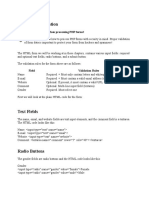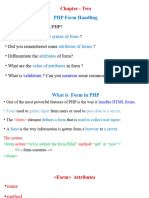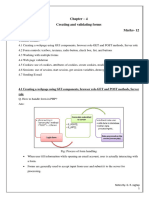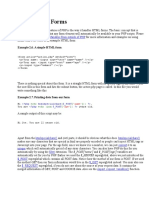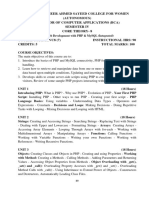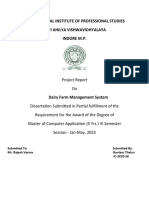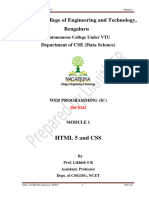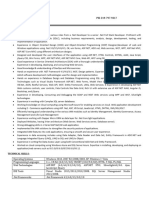0% found this document useful (0 votes)
10 views13 pagesWeek 11 Lecture
The document explains PHP form handling using superglobals $_GET and $_POST to collect form data. It provides examples of HTML forms and emphasizes the importance of form validation to enhance security against malicious input. Additionally, it discusses the differences between GET and POST methods, and outlines best practices for validating and sanitizing user input in PHP.
Uploaded by
rubihayat01Copyright
© © All Rights Reserved
We take content rights seriously. If you suspect this is your content, claim it here.
Available Formats
Download as DOCX, PDF, TXT or read online on Scribd
0% found this document useful (0 votes)
10 views13 pagesWeek 11 Lecture
The document explains PHP form handling using superglobals $_GET and $_POST to collect form data. It provides examples of HTML forms and emphasizes the importance of form validation to enhance security against malicious input. Additionally, it discusses the differences between GET and POST methods, and outlines best practices for validating and sanitizing user input in PHP.
Uploaded by
rubihayat01Copyright
© © All Rights Reserved
We take content rights seriously. If you suspect this is your content, claim it here.
Available Formats
Download as DOCX, PDF, TXT or read online on Scribd
/ 13











